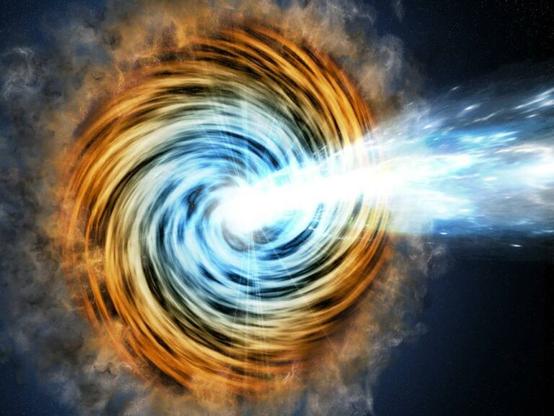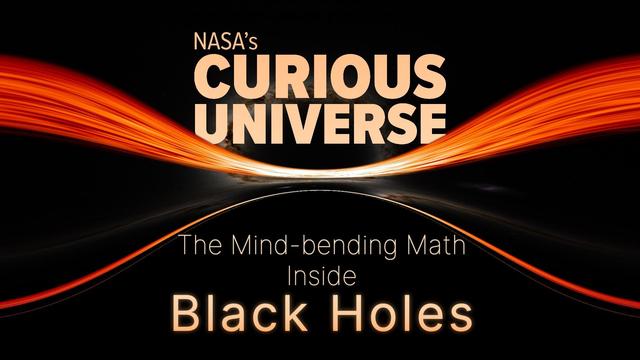NASA’s IXPE Reveals X-ray-Generating Particles in Black Hole Jets
The blazar BL Lacertae,with its jets oriented toward Earth, provided scientists with a unique opportunity to answer a longstanding question: how are X-rays generated in extreme environments like this?
#Astrophysics #Astrodon #BlackHole #BLLacertae #NASA #IXPE #science #STEM #news #blazar #physics
Stephanie Wissel, a PennState neutrino physicist, not involved in the research, called it a “knock your socks off” observation & a remarkable stroke of luck.
VERITAS and multiwavelength observations of the Blazar B3 2247+381 in response to an IceCube neutrino alert
While the sources of the diffuse astrophysical neutrino flux detected by the IceCube Neutrino Observatory are still largely unknown, one of the promising methods used towards understanding this is investigating the potential temporal and spatial correlations between neutrino alerts and the electromagnetic radiation from blazars. We report on the multiwavelength target-of-opportunity observations of the blazar B3 2247+381, taken in response to an IceCube multiplet alert for a cluster of muon neutrino events compatible with the source location between May 20, 2022 and November 10, 2022. B3 2247+381 was not detected with VERITAS during this time period. The source was found to be in a low-flux state in the optical, ultraviolet and gamma-ray bands for the time interval corresponding to the neutrino event, but was detected in the hard X-ray band with NuSTAR during this period. We find the multiwavelength spectral energy distribution is well described using a simple one-zone leptonic synchrotron self-Compton radiation model. Moreover, assuming the neutrinos originate from hadronic processes within the jet, the neutrino flux would be accompanied by a photon flux from the cascade emission, and the integrated photon flux required in such a case would significantly exceed the total multiwavelength fluxes and the VERITAS upper limits presented here. The lack of flaring activity observed with VERITAS, combined with the low multiwavelength flux levels, and given the significance of the neutrino excess is at 3$σ$ level (uncorrected for trials), makes B3 2247+381 an unlikely source of the IceCube multiplet. We conclude that the neutrino excess is likely a background fluctuation.
Astronomen ontdekken de meest verre bekende blazar
Astronomen hebben een blazer gevonden – een quasar met een jet die langs onze gezichtslijn ligt – met een roodverschuiving van 7. Dit object, VLASS J041009.05-013919.88, is de verste blazar die ooit is geïdentificeerd en biedt een zeldzaam inkijkje in het tijdperk
https://www.kuuke.nl/astronomen-ontdekken-de-meest-verre-bekende-blazar/
#ActieveGalactischeKern #blazar #quasar #reonisatie #SupermassiefZwartGat #VroegeHeelal #ZwartGat
Astronomen ontdekken de meest verre bekende blazar – Kuuke's Sterrenbeelden
Astronomen hebben een blazer gevonden – een quasar met een jet die langs onze gezichtslijn ligt – met een roodverschuiving van 7. Dit object, VLASS J041009.05-013919.88, is de verste blazar die ooit is geïdentificeerd en biedt een zeldzaam inkijkje in het tijdperk van de reïonisatie toen het heelal minder dan 800 miljoen jaar oud was.…
https://www.sci.news/astronomy/most-distant-blazar-13571.html
#science #astrophysique #découverte #blazar #quasar #trounoir #Univers #énergie #jet #cosmologie
#astronomy #SMBH #quasar Two articles - one published in the journal "Nature Astronomy" and one in "The Astrophysical Journal Letters" - report different aspects of a study of the #blazar cataloged as VLASS J041009.05−013919.88, or simply J0410−0139, the most distant found so far. Two teams of researchers used several space and ground-based telescopes and some radio telescopes to obtain detections in various electromagnetic bands.
Curious Universe Video Episode: The Mind-bending Math Inside Black Holes 🛰️
#ACE #Astrophysics #BlackHole #Blazar #Heliophysics #Hinode #Hyperwall #IRISMission
⏩ 2 new pictures and 2 new videos from NASA (SVS) https://commons.wikimedia.org/wiki/Special:ListFiles?limit=17&user=OptimusPrimeBot&ilshowall=1&offset=20241218130000






